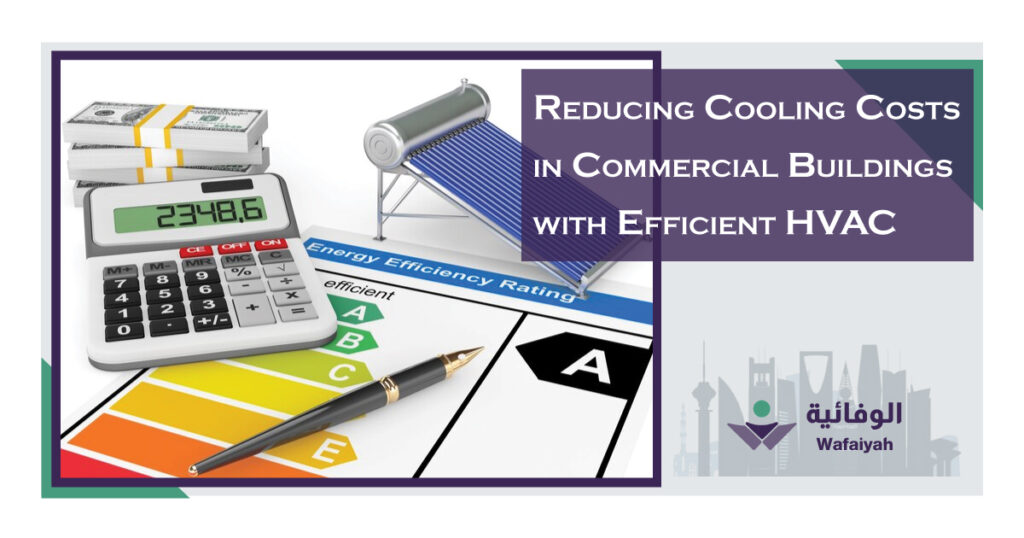Cooling costs in commercial buildings account for a significant portion of monthly energy expenses, especially in hot climates like Saudi Arabia. As energy prices rise and sustainability becomes a priority, facility managers and business owners are increasingly turning to efficient HVAC systems to reduce cooling expenses without compromising indoor comfort. Adopting the right HVAC strategies not only cuts operational costs but also improves system performance, supports environmental goals, and enhances occupant satisfaction.
Understanding HVAC’s Role in Energy Consumption
Heating, ventilation, and air conditioning systems are central to the functioning of any commercial space. From offices and malls to warehouses and hospitals, HVAC systems are responsible for maintaining indoor air quality, regulating temperature, and ensuring a comfortable environment. However, they are also some of the largest energy consumers in a building. In many commercial properties, HVAC usage accounts for up to 40 to 60 percent of total energy consumption.
Without proper design, maintenance, and upgrades, traditional HVAC systems can become inefficient over time, resulting in energy waste and inflated utility bills. Understanding how HVAC systems impact energy performance is the first step toward making cost-saving improvements.
Common Reasons for High Cooling Costs
Inefficient HVAC Equipment
Older HVAC systems or those with outdated technology often lack the energy-saving features found in modern units. They may require more power to operate and may not adapt well to changing temperature demands throughout the day.
Poor System Design
Incorrectly sized HVAC systems, improper ductwork, or poor layout planning can lead to uneven cooling, hot and cold spots, and overworked compressors. These inefficiencies cause systems to cycle more frequently, increasing energy usage and wear.
Lack of Maintenance
Dust buildup, clogged filters, refrigerant leaks, and dirty coils are common problems in poorly maintained systems. When HVAC components are not regularly serviced, the system must work harder to deliver the same level of cooling, driving up operational costs.
Manual Controls and Inflexible Settings
Manually controlled HVAC systems lack the precision needed to optimize cooling based on real-time data. Buildings that rely on fixed thermostat settings or inconsistent user input often experience unnecessary energy consumption.
Strategies for Reducing HVAC Cooling Costs
Upgrading to Energy-Efficient HVAC Systems
Replacing an aging HVAC system with an energy-efficient model is one of the most effective ways to reduce long-term cooling costs. Newer systems are designed with variable speed motors, high-efficiency compressors, and smart temperature controls. These features allow the system to adjust its performance based on current cooling needs, reducing waste and extending equipment lifespan.
Investing in ENERGY STAR® certified HVAC units ensures compliance with energy-saving standards. Though the initial investment may be higher, the return in energy savings and reduced maintenance costs is substantial over time.
Incorporating Smart Thermostats and Building Management Systems
Smart thermostats and building automation systems (BAS) allow real-time monitoring and control of HVAC settings. These technologies use occupancy data, outdoor temperature trends, and usage history to fine-tune cooling performance. Automated systems can detect when rooms are unoccupied and reduce cooling accordingly, leading to lower energy consumption without sacrificing comfort.
In multi-zone buildings, smart zoning enables separate areas to be cooled independently based on usage. This targeted cooling approach eliminates waste and provides better temperature control.
Regular Preventive Maintenance
Scheduled maintenance is essential to ensure optimal HVAC performance. Regularly cleaning coils, replacing filters, checking refrigerant levels, and inspecting ductwork can prevent system strain and improve energy efficiency. Technicians can also identify minor issues before they lead to system breakdowns, saving money on costly emergency repairs.
Establishing a seasonal maintenance plan allows facility managers to keep the system running at peak performance, especially before the summer months when cooling demand is at its highest.
Improving Insulation and Building Design
Enhancing Building Envelope
Even the most efficient HVAC system can struggle in a building with poor insulation. Upgrading insulation in walls, ceilings, and roofs helps maintain indoor temperatures by reducing heat gain from the outside. A tighter building envelope means HVAC systems don’t have to work as hard to cool the space, resulting in lower energy usage.
Installing energy-efficient windows, reflective roofing materials, and window films further enhances insulation. These modifications reduce solar heat gain and improve the building’s overall energy profile.
Reducing Air Leaks
Unsealed windows, doors, and ducts can allow cool air to escape and hot air to enter, forcing the HVAC system to run longer. Conducting an energy audit to detect air leaks and sealing gaps with caulking or weather stripping helps maintain temperature consistency and reduce load on the system.
Leveraging Renewable and Alternative Cooling Technologies
Integrating Solar-Powered HVAC
In sun-rich regions like Saudi Arabia, solar-powered HVAC systems offer a practical and eco-friendly way to reduce cooling costs. Solar panels can power compressors, fans, or entire HVAC systems during daylight hours, reducing reliance on the electrical grid. Over time, the savings on utility bills can offset the initial installation cost, while also contributing to sustainability goals.
Utilizing Thermal Energy Storage
Thermal energy storage systems reduce peak demand charges by producing and storing chilled water or ice during off-peak hours, such as nighttime. The stored energy is then used during peak hours to cool the building. This approach not only lowers energy bills but also reduces strain on the HVAC system and helps utility providers manage grid load more efficiently.
Optimizing HVAC Operations Through Employee Awareness
Raising awareness among building occupants can also support HVAC efficiency goals. Encouraging staff to keep doors and windows closed, avoid blocking air vents, and report unusual changes in room temperature or air quality can help maintain system efficiency.
Facility managers can also implement training programs to teach maintenance teams how to operate HVAC systems more efficiently, monitor energy use, and respond to system alerts. Creating a culture of energy responsibility ensures that everyone contributes to reducing cooling costs.
Monitoring Performance and Measuring Savings
HVAC efficiency initiatives should be supported by regular performance monitoring. Installing energy meters, collecting usage data, and analyzing trends can help identify inefficiencies and verify the effectiveness of implemented strategies. Performance reports also allow facility managers to make data-driven decisions for future upgrades or maintenance scheduling.
By tracking metrics such as system runtime, temperature consistency, energy usage per square meter, and occupant satisfaction, commercial building operators can continuously improve HVAC performance and ensure sustained savings.
Conclusion: Building a Cost-Efficient Cooling Strategy
Reducing cooling costs in commercial buildings requires a combination of smart technology, proactive maintenance, building upgrades, and efficient system design. With the right approach, businesses can significantly cut their energy bills, extend the lifespan of HVAC equipment, and create more sustainable operations.
In regions with extreme temperatures, such as the Middle East, optimizing HVAC efficiency is not just a cost-saving measure—it’s a necessity. As more companies commit to ESG goals and energy-conscious practices, efficient HVAC solutions will continue to play a critical role in commercial property management.
Facility managers, business owners, and engineers should prioritize HVAC upgrades and energy efficiency improvements to remain competitive, compliant, and environmentally responsible in the years to come.


